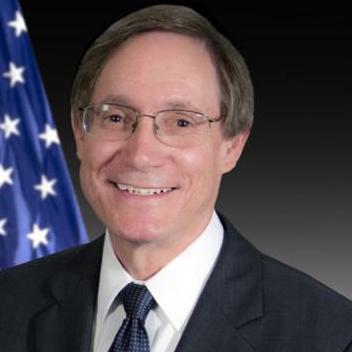
Commissioner Mohorovic’s four proposals would impose “paralysis by analysis” on the CPSC.
One of my fellow Commissioners on the U.S. Consumer Product Safety Commission (CPSC), Joseph Mohorovic, recently published an essay on The Regulatory Review that I consider to be thoughtful, creative—and wrong.
To be clear, I have no disagreement with Commissioner Mohorovic’s proposition that improving agency functioning is a good thing. But my colleague’s approach prescribes an all-too-familiar nostrum for regulatory reform: impose “paralysis by analysis” by regulating the regulators. In other words, my colleague proposes that we should improve the rulemaking process by having regulators jump through even more hoops than they currently face. The hoops are different, but the obstacles are the same.
Commissioner Mohorovic offers four suggestions for improving rulemaking at CPSC. I will discuss each of them and offer my comments in turn.
Regulatory Agenda. First, my colleague criticizes the Commission’s approach to publishing its regulatory agenda. Regulatory agendas date back to the Carter Administration. In 1978, President Carter issued Executive Order 12,044, which called on agencies to alert the public to impending major rules—those rules with an annual impact on the economy of $100 million or more—by publishing their plans for regulation in advance. Subsequent legislation and executive orders have expanded the requirement that agencies publish their regulatory agendas not just for major rules, but for all other rules as well. My colleague criticizes CPSC’s regulatory agenda because it contains every rulemaking project begun but not yet completed, including those rulemakings that have been on the books for years and appear unlikely to be promulgated in the near future. As Commissioner Mohorovic puts it, “[t]he Agency’s outdated agendas run the risk of not only under-informing the public, but also actively misleading them as to what projects the Agency will spend its time on in the coming year.”
The notion that CPSC under-informs the public by providing too much information strikes me as a bit curious, but I am delighted to respond to Commissioner Mohorovic’s complaint. As he notes, the Commission staff does compile a list that includes every regulatory initiative undertaken at CPSC—including many initiatives that CPSC likely will not address for many years. But this exhaustive list is primarily for internal Commission review—and is not the regulatory agenda that CPSC publishes for the public, nor is it the one that we use in carrying out our mission.
Any member of the public can easily locate the agenda that we use by conducting a Google search of the term, “CPSC regulatory agenda.” The very first result generated by this search is the actual regulatory agenda that CPSC has approved in its annual Operating Plan—a plan with which anyone who even casually follows CPSC activities likely is familiar. This agenda is a short, direct list of projects, precisely of the type called for by my colleague.
Moreover, the exhaustive list of projects that troubles Commissioner Mohorovic is one that I find extremely valuable. It serves as a reminder, both to members of the public and myself, of the numerous worthy matters before CPSC that have been placed on the backburner due to the Commission’s extremely limited resources. In fact, CPSC’s budget remains the smallest of all health and safety agencies by far. To put this in perspective, consider that the U.S. Food and Drug Administration’s request for extra funding in its budget last year significantly exceeded CPSC’s entire budget.
External Review. My colleague’s second recommendation is to subject independent agencies like CPSC to external review by the White House Office of Information and Regulatory Affairs (OIRA). This proposal is not new. A host of opponents of regulation have been advancing similar recommendations for many years. To date, none have succeeded, but with the reins of government now firmly in the hands of members traditionally hostile to regulation, the future is harder to predict.
I strongly oppose this recommendation, which would constitute a gigantic step towards “paralysis by analysis.”
As a starting point, placing such reviews under OIRA’s purview would be a death knell for independent agencies—entities that have been part of a reasoned and time-honored tradition dating back over a century. Beginning in 1887, when Congress established the Interstate Commerce Commission to insulate rate-setting from political corruption, Congress has set up independent agencies, with the aim of warding off improper tampering with certain government processes by outside political forces. Independence helps guarantee regulatory decisions will be made by experts in the field and outcomes motivated more by the merits of issues than by politics.
Yet conferring on OIRA the authority to “review” agency rules would turn this objective on its head. It would effectively vest control of agency rulemaking in OIRA, given the agency’s ability to delay rules interminably or send them back for analysis and re-analysis until the rules are weakened or gutted. And it should come as no surprise that, if my colleague’s recommendation were adopted, the strongest and most persistent voices before OIRA would be industry representatives seeking yet another venue to oppose proposed rules.
Moreover, it is incorrect to suggest that independent agencies are not subject to sufficient external review. To the contrary, there are numerous external review mechanisms of agency rulemaking efforts. For one, all rules issued by independent agencies can be challenged in federal court by aggrieved parties—an approach invariably pursued by opponents of our rules.
Further, Congress can, and usually does, conduct external reviews of agency actions. In addition to holding oversight hearings to scrutinize agency proposals, Congress can always freeze funding for pending regulations, thereby bringing agency action to a halt—a move that Congress has had no qualms about deploying against CPSC. Additionally, Congress can explicitly reject agency rules under the Congressional Review Act, which provides Congress with an expedited review process for voting to invalidate agency rules.
Commissioner Mohorovic also neglects to mention internal review of agency rules. Most independent agencies are multimember bodies, headed by Commissioners who often have differing regulatory philosophies from one another. Such a structure enables diverging policy perspectives to be voiced publicly. Indeed, my colleague rarely fails to point out deficiencies that he sees in draft rules and to push the other Commissioners to address his concerns.
In short, providing the additional—and duplicative—external review that Commissioner Mohorovic calls for would further draw out the already slow process of developing safety rules at CPSC. It would lead, in other words, to “paralysis by analysis.”
Further to this point, the last major CPSC “regulatory reform” added numerous cumbersome steps that turned rulemaking into what I liken to a stampede of turtles through a vat of peanut butter. Consider that from 1973 to 1981, CPSC enacted roughly 24 safety rules—about three per year. By contrast, since Congress added more cumbersome rulemaking procedures in 1981, CPSC has promulgated only 10 rules under these procedures—about one rule every three-and-a-half years. Not only have these procedures not led to any discernible improvements in the quality of rules, but these onerous requirements have also meant that vital safety issues remain unaddressed. I have little doubt that my colleague’s proposal would add additional years to the process, but with no added benefits.
What is so troubling about the delays caused by these so-called “regulatory reform” measures—and what I never lose sight of—is that lives and limbs are at stake. These delays spell doom for hundreds of thousands of vulnerable consumers.
Public Participation. My colleague’s third proposal calls for increased public participation in the rulemaking process. Here, he argues that CPSC “too often” has failed to go beyond the minimum participation provided under the Administrative Procedure Act. In support of this claim, he cites only one example—a rulemaking on phthalates. The CPSC Chairman at the time granted the request of the independent scientific panel that drafted the original report on phthalates to conduct a closed, invitation-only peer review.
Without going into the intricacies of this very atypical rulemaking, I will simply note that all materials in the rulemaking were made publicly available, and the rule was subject to public comment. Further, the parties complaining about the process were not resource-limited public interest groups, but rather multibillion-dollar corporations that have no problem expressing their views to the agency. (Incidentally, and underscoring my previous point about “paralysis by analysis,” the rulemaking process for this phthalates rule has dragged on so long that the Natural Resources Defense Council filed suit to compel us to move forward with the rulemaking.)
I take strong issue with Commissioner Mohorovic’s criticism that CPSC does the minimum with respect to public participation. To the contrary, many observers believe that CPSC’s approach to public participation is among the best in the federal government. Indeed, since the agency’s inception, public participation has been a goal of paramount importance, and over the years we have implemented various measures in furtherance of this objective. These measures have included the following:
- Open Meetings Policy: Unlike most other agencies, whenever CPSC employees meet with outside parties on matters of substantial interest, we require that the meetings be announced in advance in our public calendar, and that such announcements provide that any members of the public who wish to attend the meeting are permitted to do so.
- Oral Presentations in Regulatory Proceedings: In another break from many other regulatory agencies’ proceedings, most of the acts enforced by CPSC require that throughout the rulemaking process, interested persons are offered an opportunity to give oral presentations containing relevant data, views, and arguments, as well as the opportunity to send in written submissions.
- Publicly Available Database: In March 2011, CPSC established a user-friendly product safety database that enables members of the public to report and read about the risks of harm associated with consumer products.
- Annual Priorities Public Hearing: In accordance with the Consumer Product Safety Act, before establishing its agenda and priorities for each year, CPSC holds a public hearing and invites members of the public to publicly testify and offer written comments.
Pay-Go. Commissioner Mohorovic’s final proposal is what he calls “pay as you go,” or “pay-go.” In essence, he argues that regulation-imposed economic costs are a finite resource that should be held constant by requiring agencies to remove existing regulations whenever they adopt new rules that impose extra costs on the public. (I note that President Trump recently issued an executive order calling on federal agencies to identify two regulations to repeal for every new one that they issue, which looks remarkably like my colleague’s proposal.)
As much as I admire my colleague’s creativity, I find this proposal to be singularly unconvincing. Without delving into all of the ways that I find the proposal flawed, I offer three brief objections.
First, Commissioner Mohorovic’s proposal treats all costs as fungible, which they most definitely are not. Removing costs in one arena may do little to help those in another; nor would doing so help society at large. For example, terminating CPSC’s fabric flammability standards would do nothing to help ATV manufacturers or phthalate producers. To the contrary, what such haphazard cost-cutting would do is expose millions of children to the increased risk of burns from flammable sleepwear.
My second objection, and what I find to be particularly troubling, is that my colleague never mentions the reason that health and safety agencies exist: to protect vulnerable consumers from unreasonably dangerous products. When most observers address proposed regulations, they focus on costs and benefits. But Commissioner Mohorovic addresses only one aspect of regulation: costs. This strikes me as an overly one-sided approach. If we are supposed to adopt a “pay-go” scheme, as my colleague advises, why is there no insistence that each new rule add to and replace the benefits of any withdrawn rules?
Third, my colleague’s proposal never addresses the many benefits of long-established safety rules that vastly outweigh their costs. If, for example, withdrawing a rule were to save a dollar of costs but at the same time removed 10 dollars in benefits, doing so would not seem terribly useful.
At bottom, I always admire my colleague—and good friend—for his thoughtful proposals. In fact, as a former professor, I would award him an “A” for creativity. Alas, I would grade him a bit lower on substance.
This essay is part of a five-part series, entitled Two CPSC Commissioners Debate Regulatory Reform.
The photograph of the Federal Triangle, where the Interstate Commerce Commission was located, is used unaltered under a Creative Commons license.




